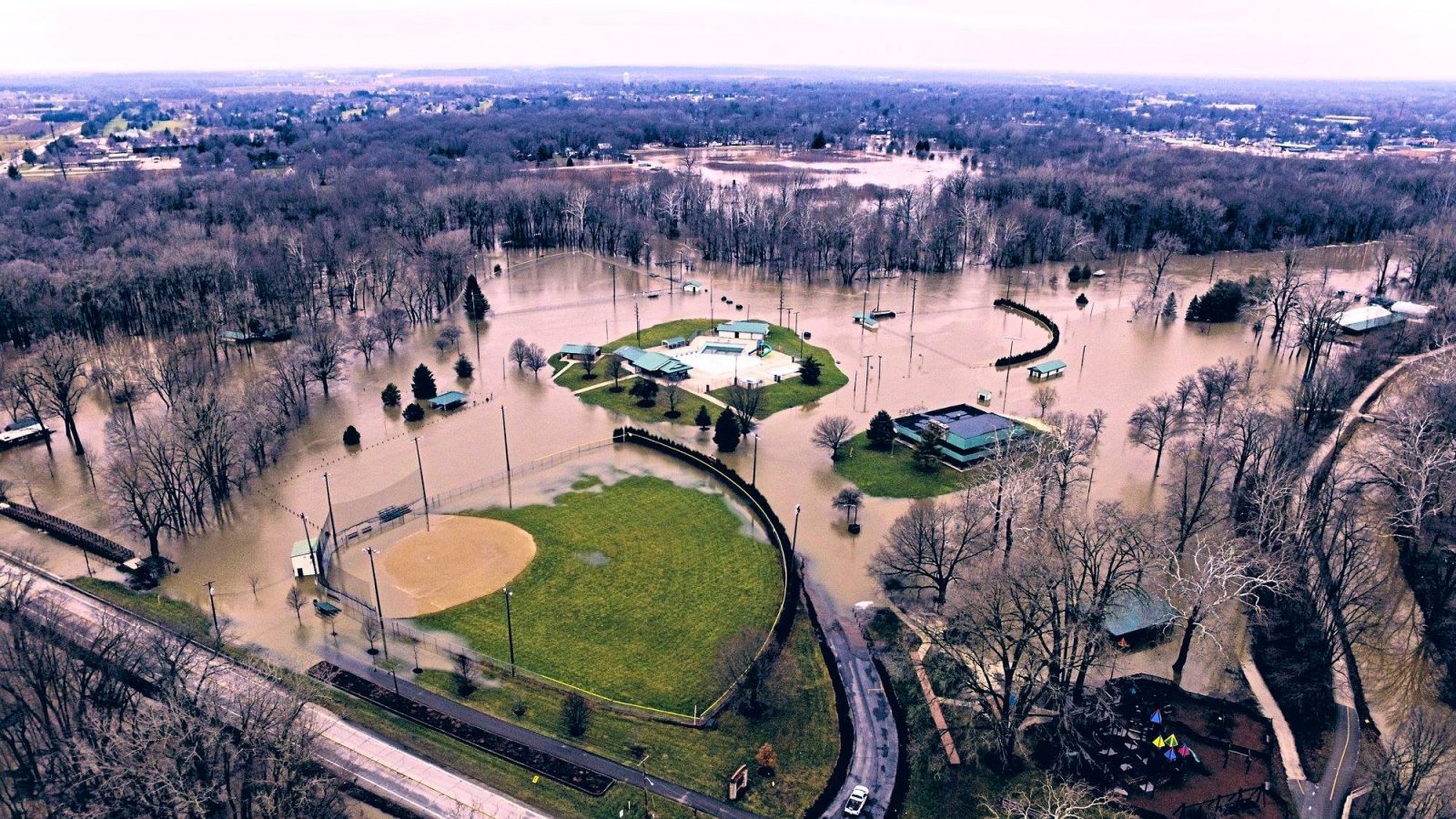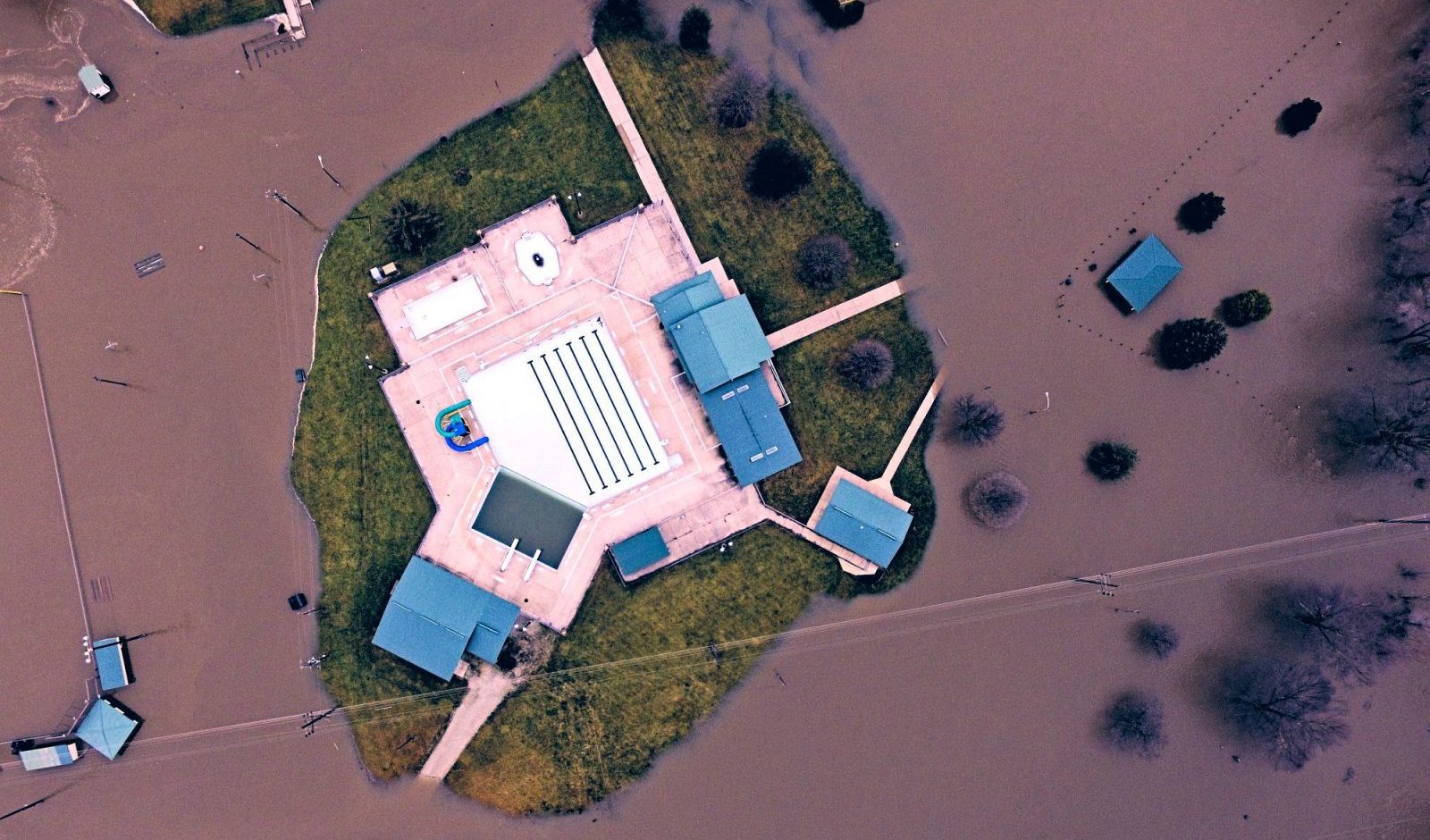While Americans gawked at T-shirt–clad New Yorkers reveling in 80-degree February heat, they missed the floods unfolding in northern Indiana, where people kayaked across grocery store parking lots.
Welcome to my hometown, Goshen, Indiana. The Maple City declared a state of emergency on Wednesday as unprecedented floodwaters swept into the streets and emergency crews used boats to evacuate people from their homes.
The rain came from a major storm system that swept through the middle of the country beginning on Monday. Rivers have swelled from Texas to Michigan, closing roads, causing car accidents, and shutting down schools. And the rainfall isn’t expected to stop completely until this weekend.
In northern Indiana, the storm dumped its warm rain on more than a foot of snow. With the ground frozen, there was nowhere for the rainfall and snowmelt to go — except into streets, parking lots, and homes. Goshen’s outdoor pool was just about the only dry spot around.
“We’ve had flooding events in the past, but never anything this severe,” Jason Kauffman, stormwater coordinator for the City of Goshen, told Grist. “It cut the city in half.”
In the nearby city of South Bend, Indiana, the river swelled to 12.7 feet — almost two feet higher than the previous record from 1982, the National Weather Service reported. South Bend Mayor Pete Buttigieg called the event a 500-year flood — one so rare it should only occur about once in 500 years, according to flood-risk maps. Of course, climate change has other ideas.
The flooding is a sign of what lies ahead for the region. The Environmental Protection Agency says that climate change has increased the frequency of floods and heavy precipitation events in Indiana. And Purdue University’s Climate Change Research Center predicts that climate change will bring more winter rains to Indiana, which could make flooding worse.
Research from Stanford University last year showed that half of broken precipitation records around the globe were made more likely and more severe by climate change. And the rains that hit the northern Indiana area were certainly record-breaking.
It’s a reminder that climate change doesn’t just affect the coasts. Even for Midwesterners like me, it can hit uncomfortably close to home.




